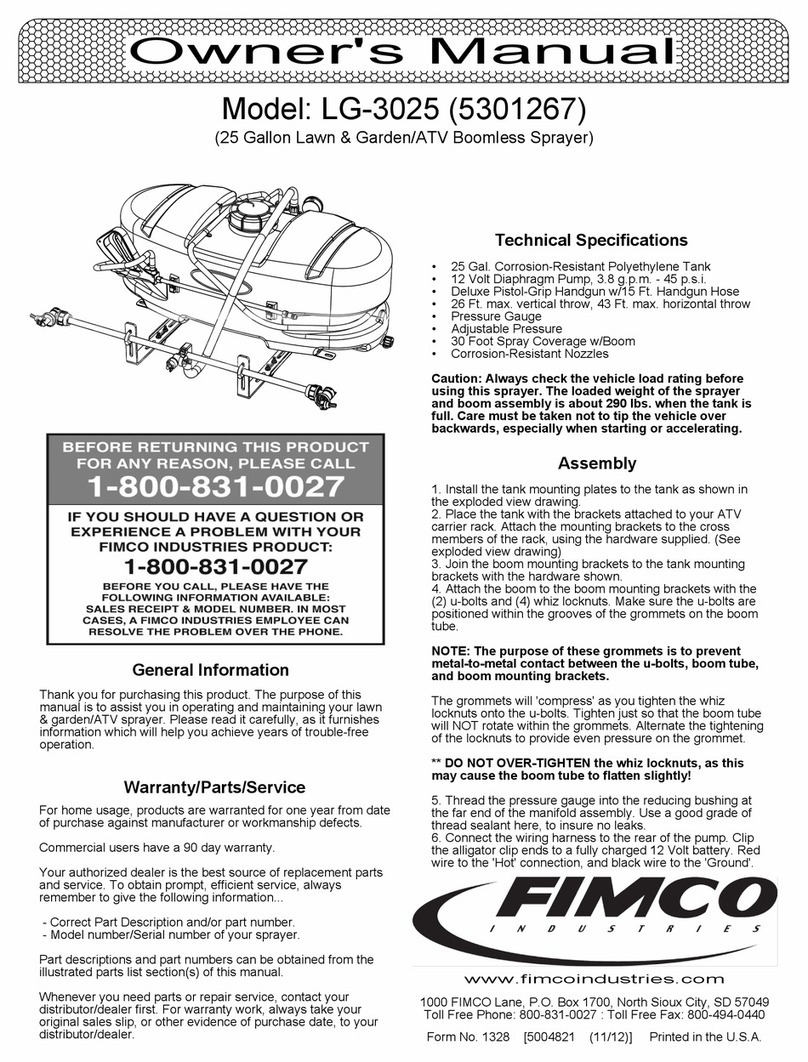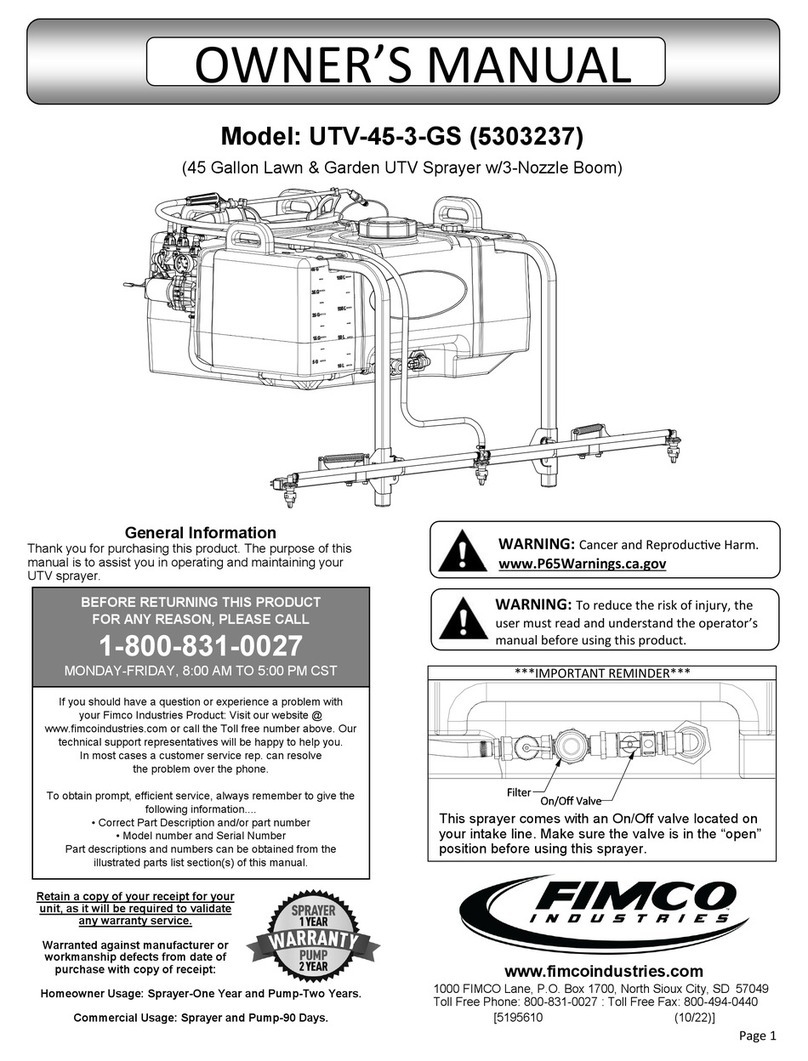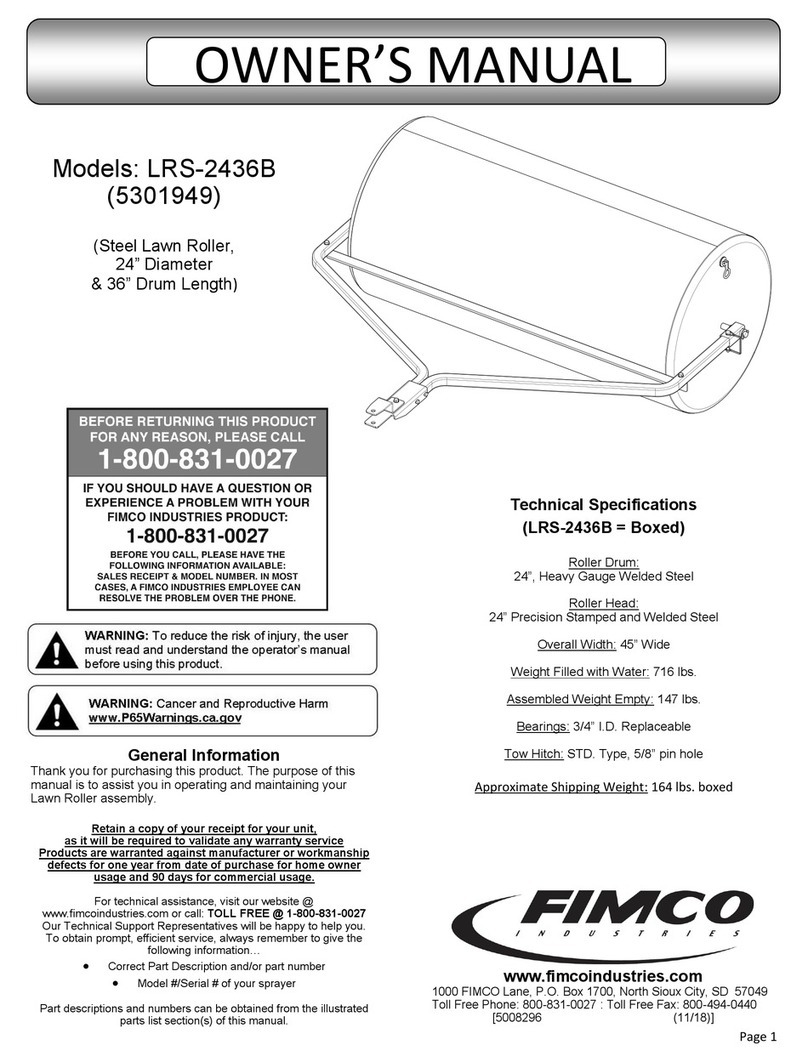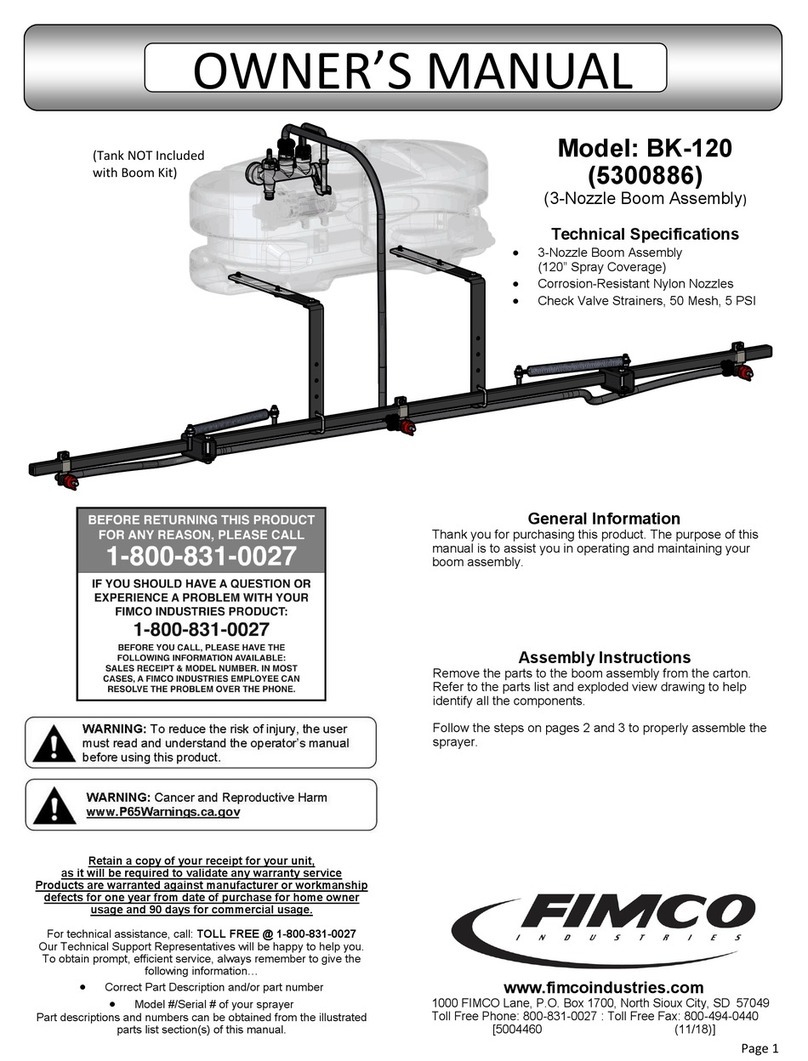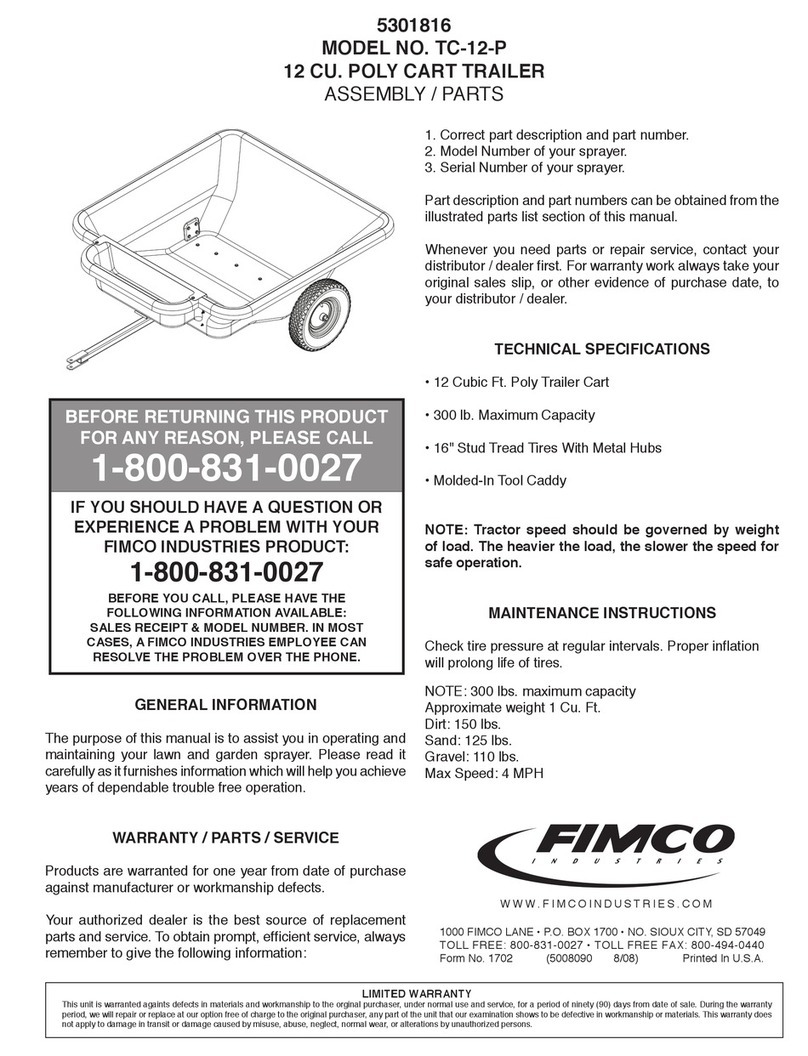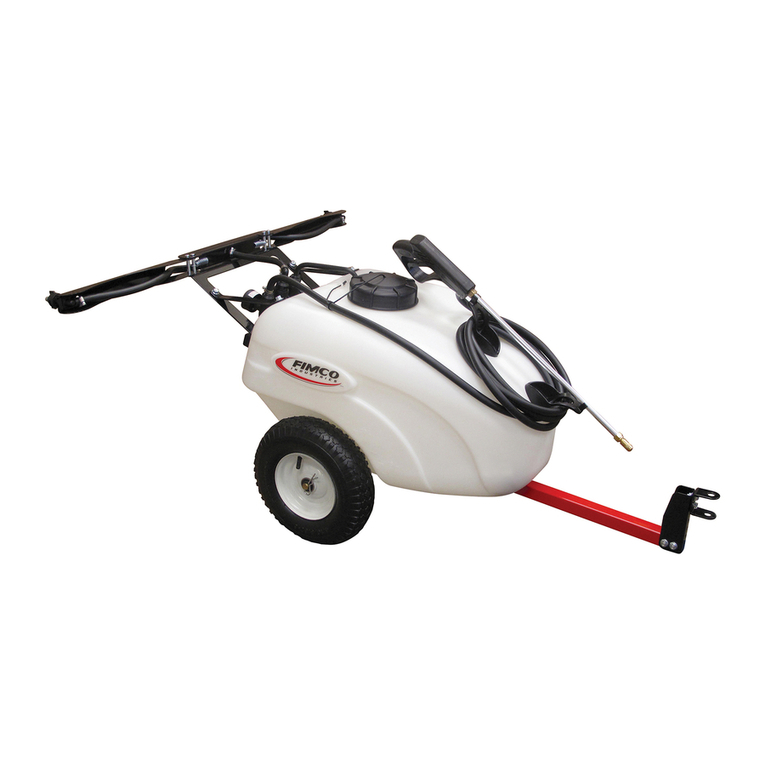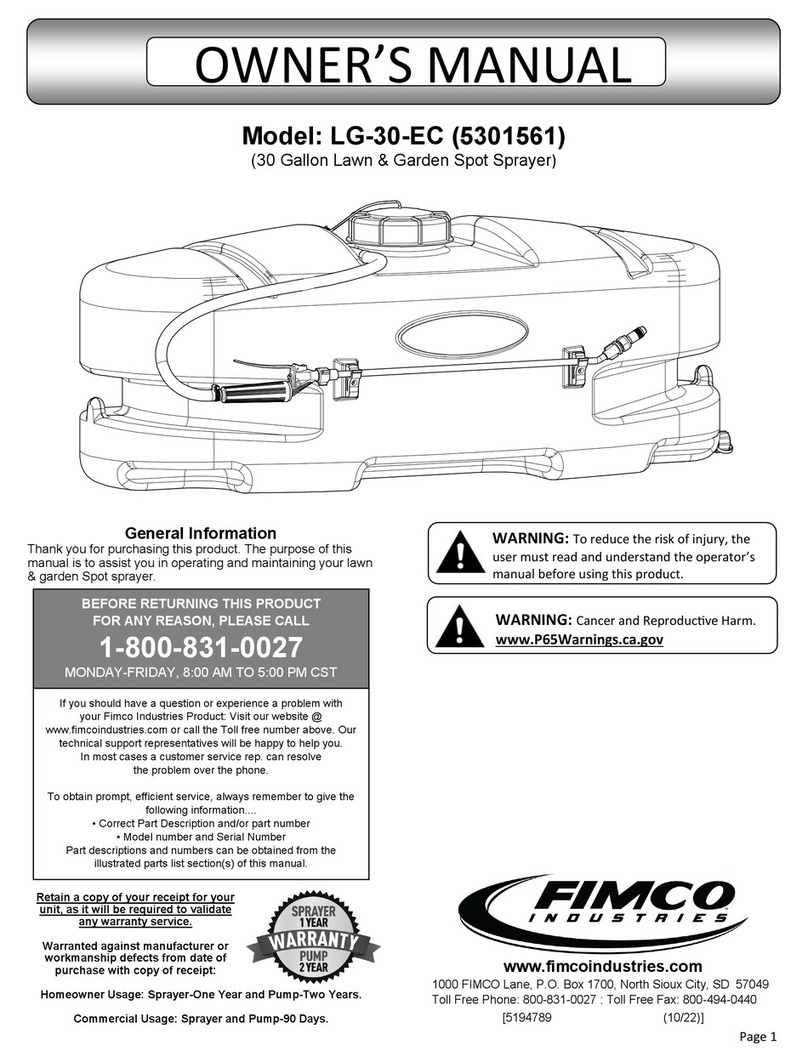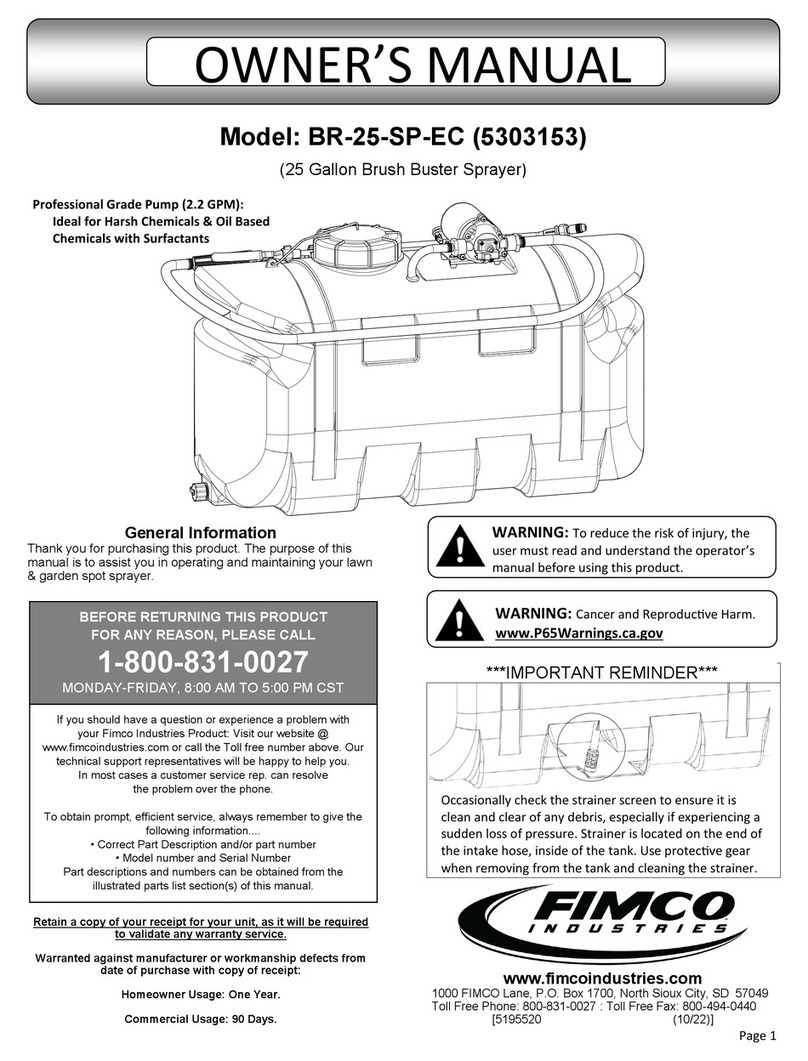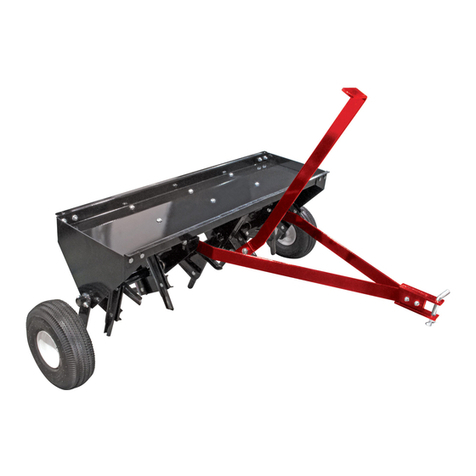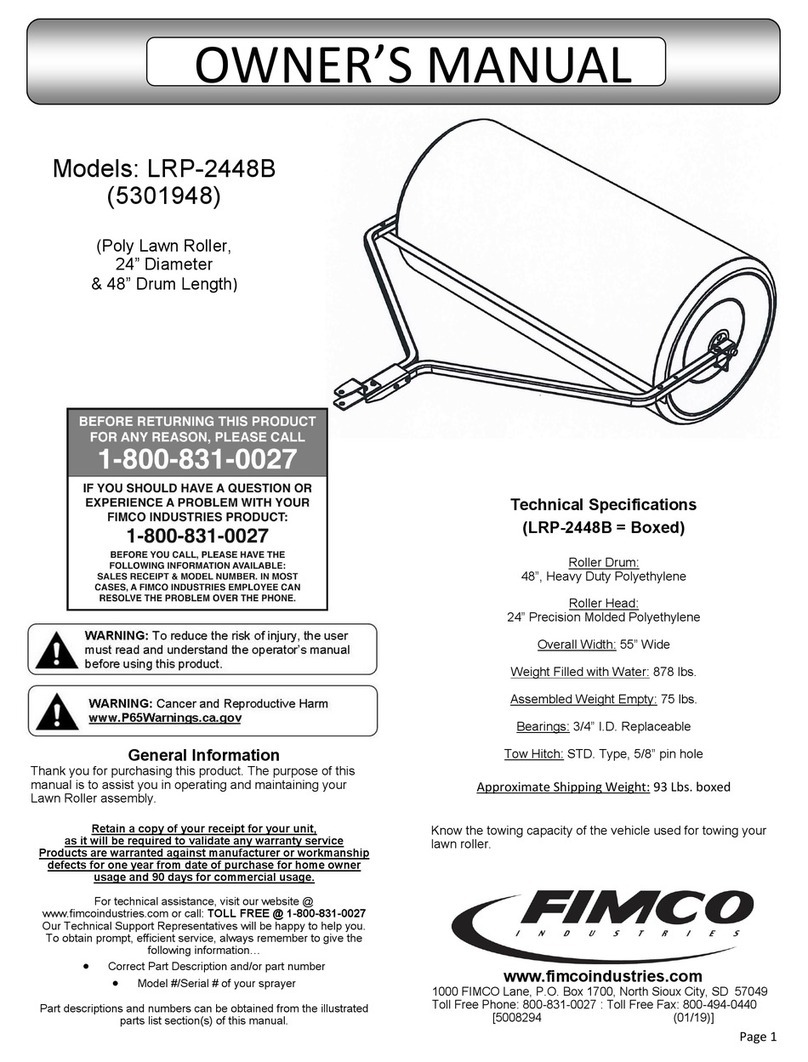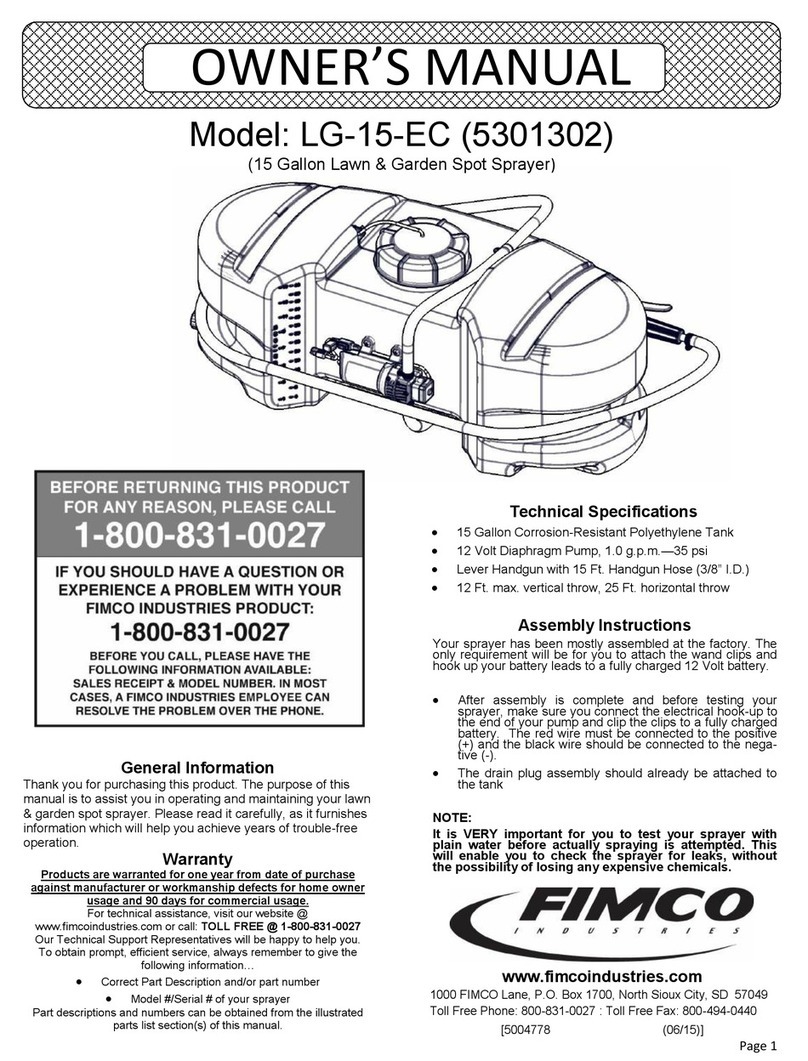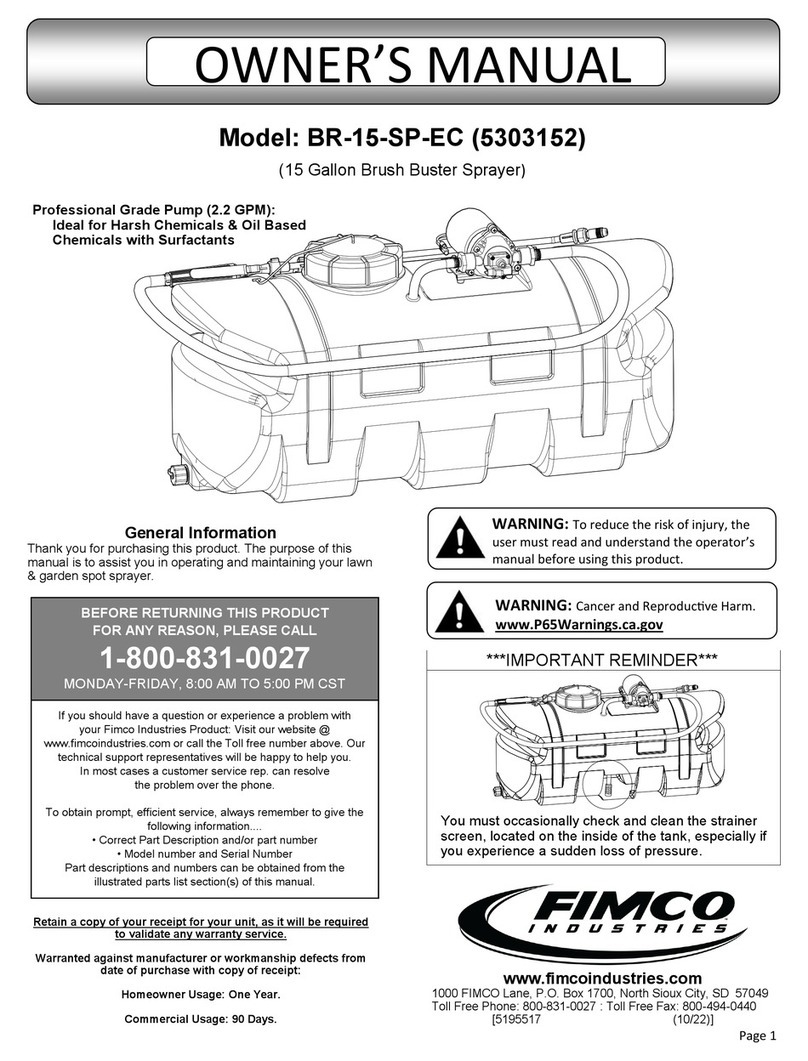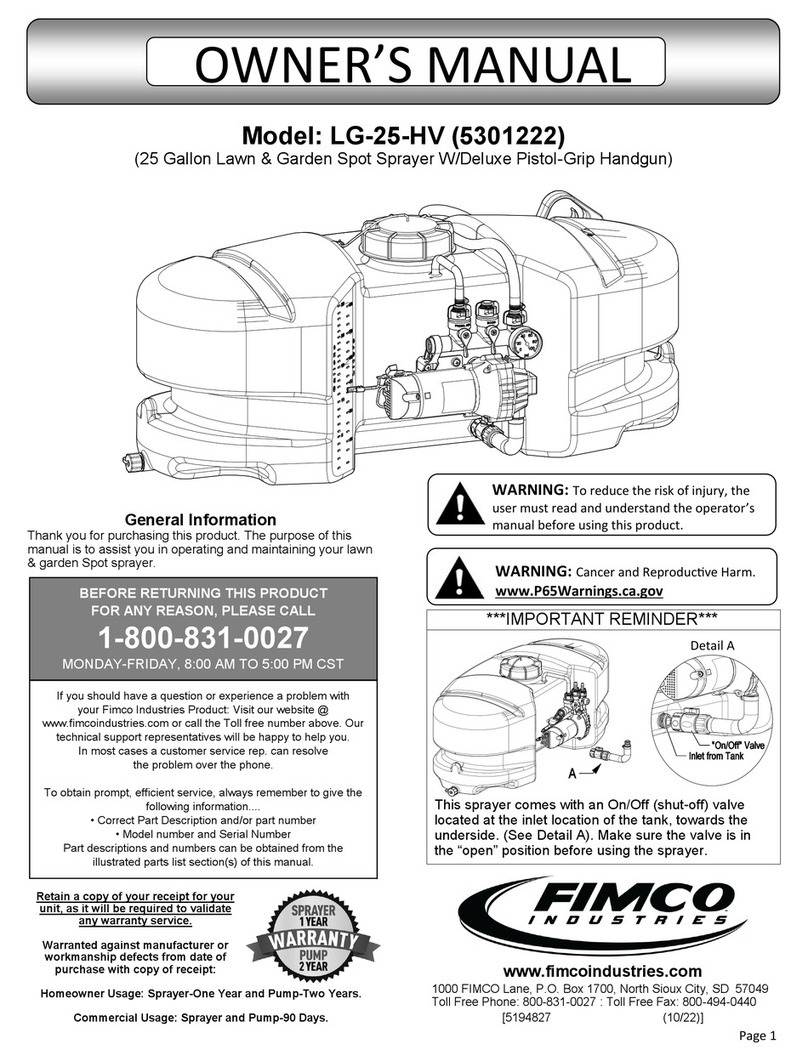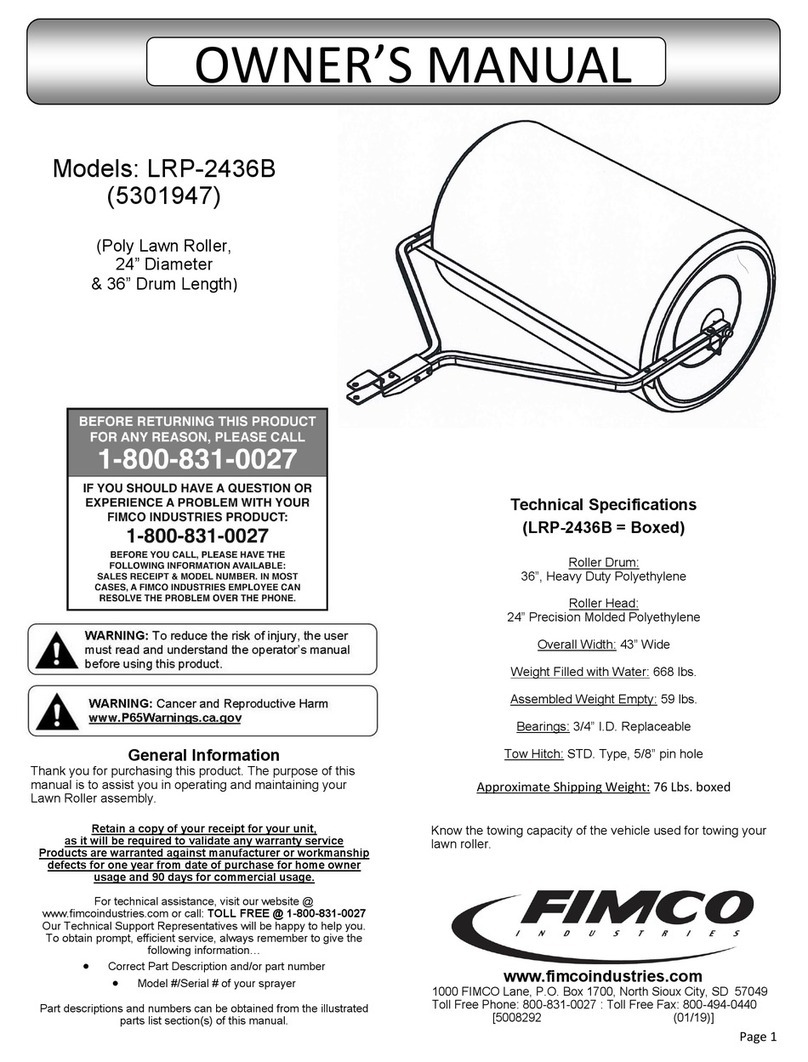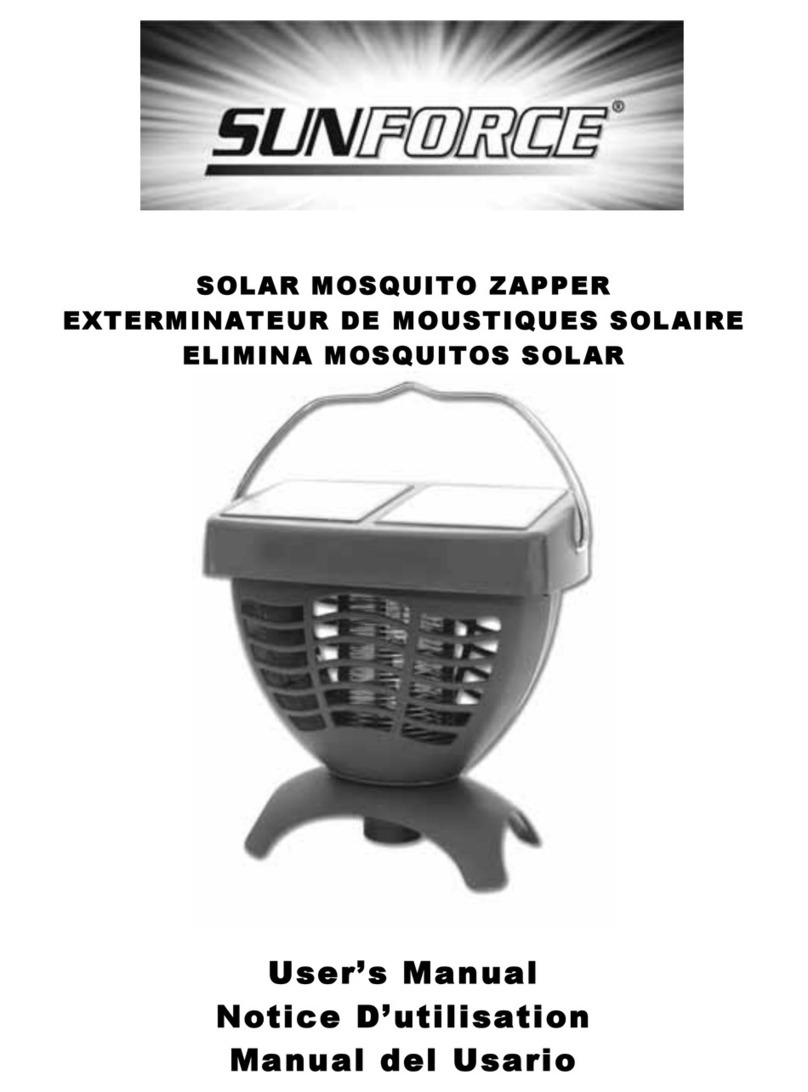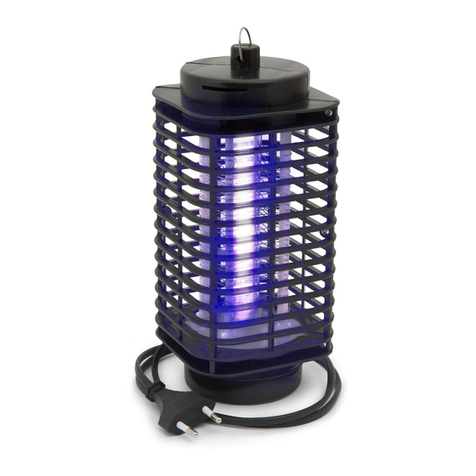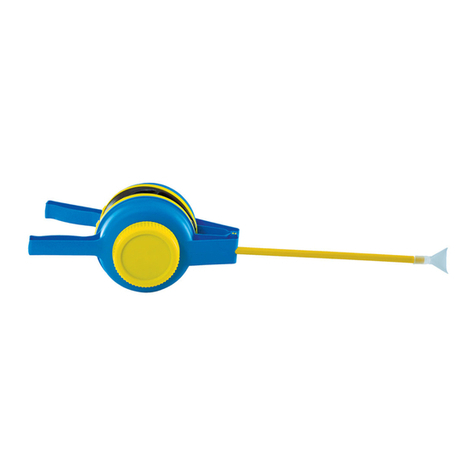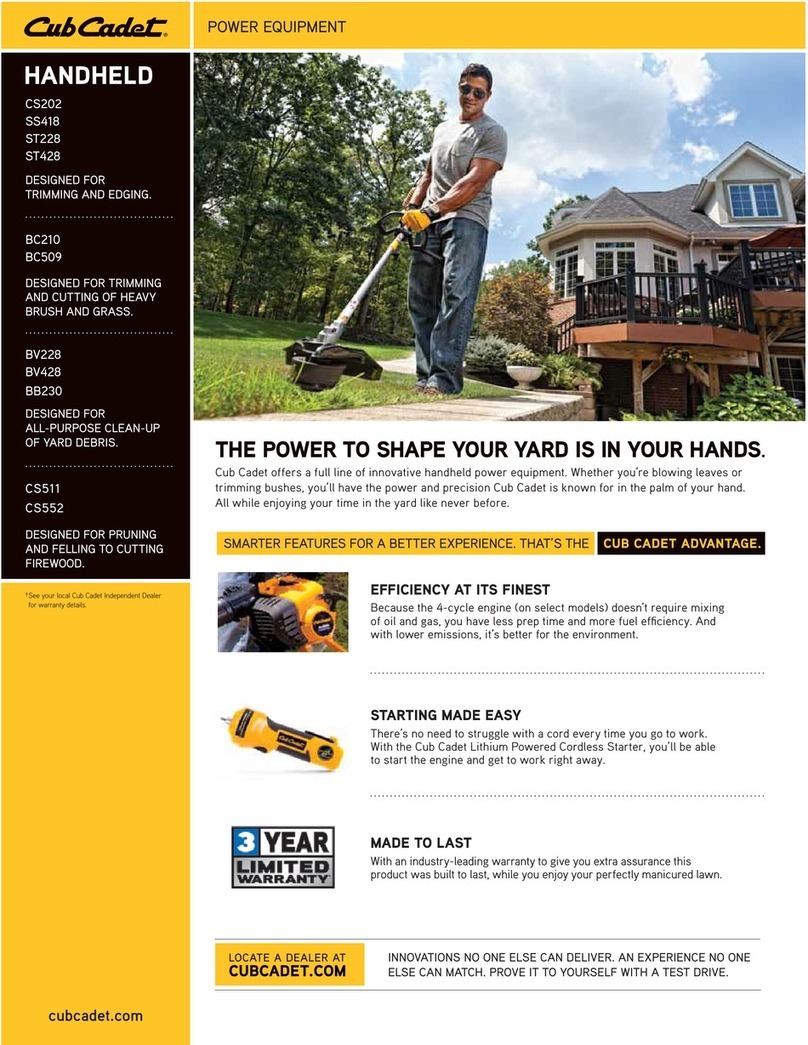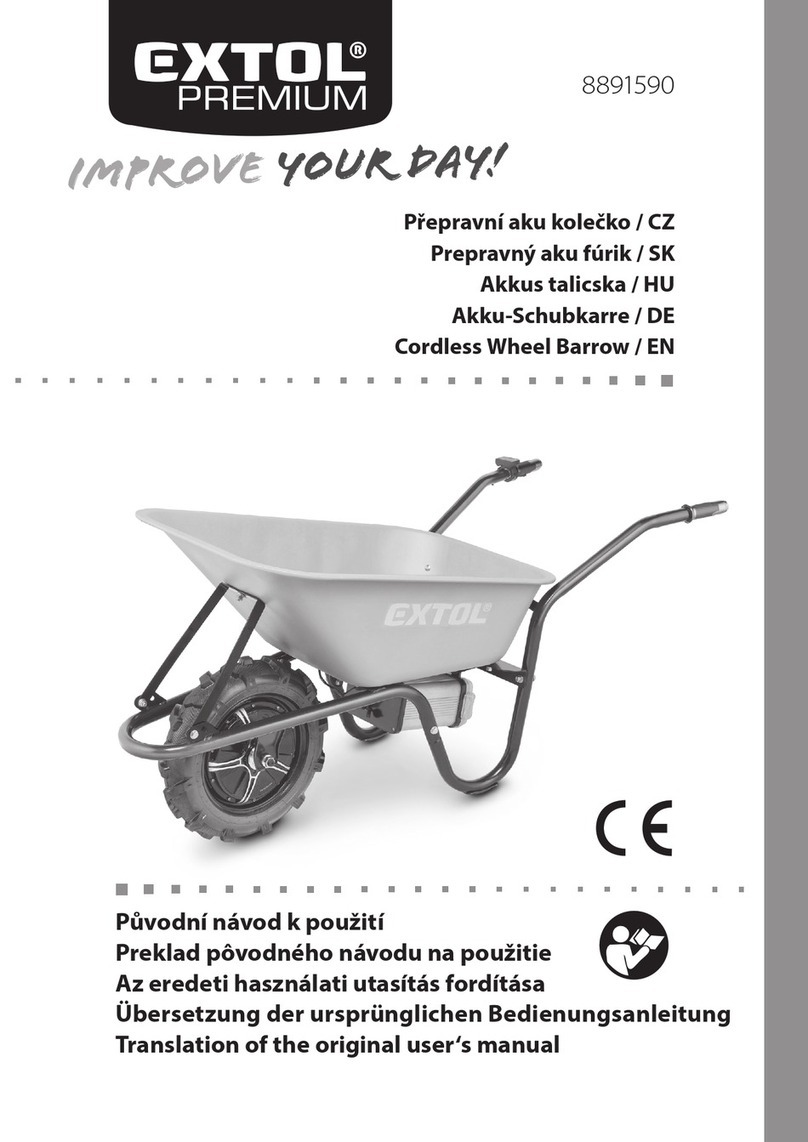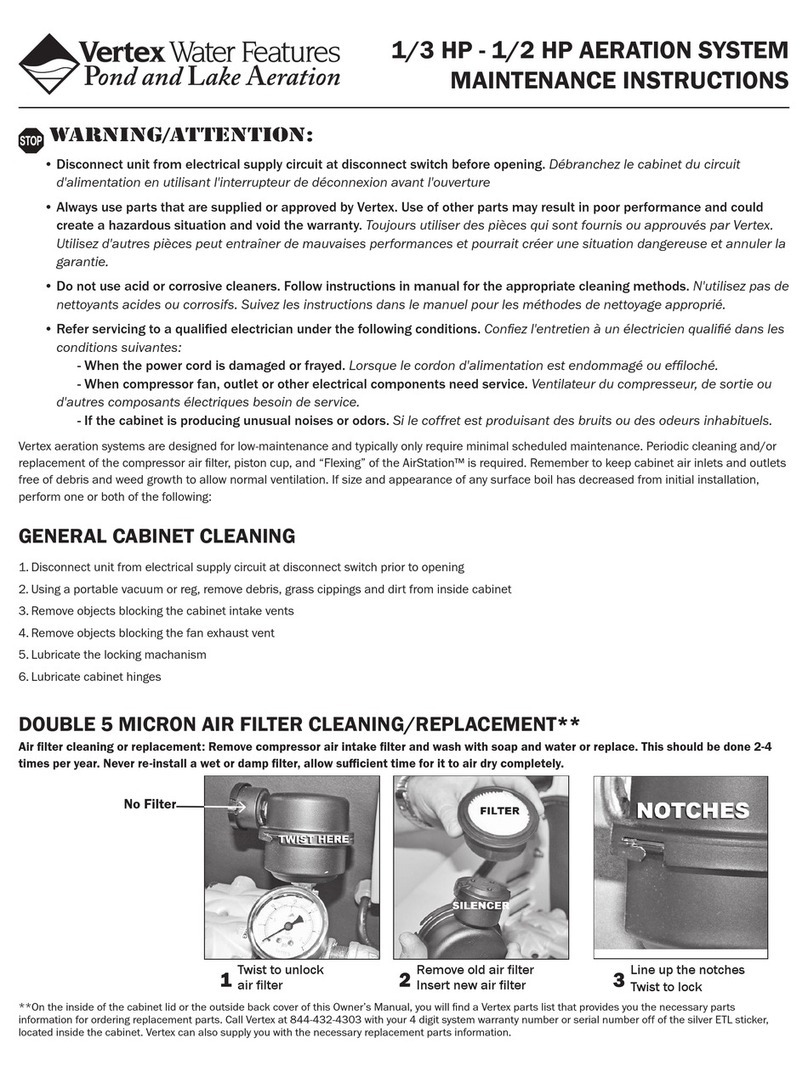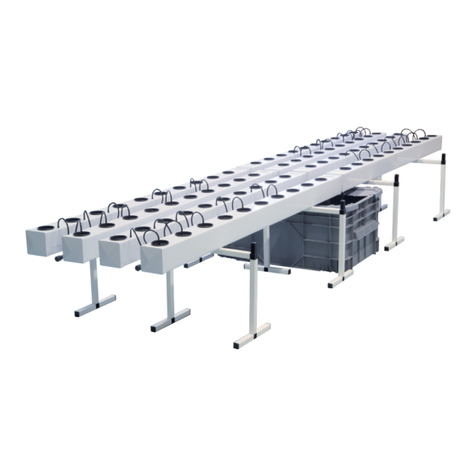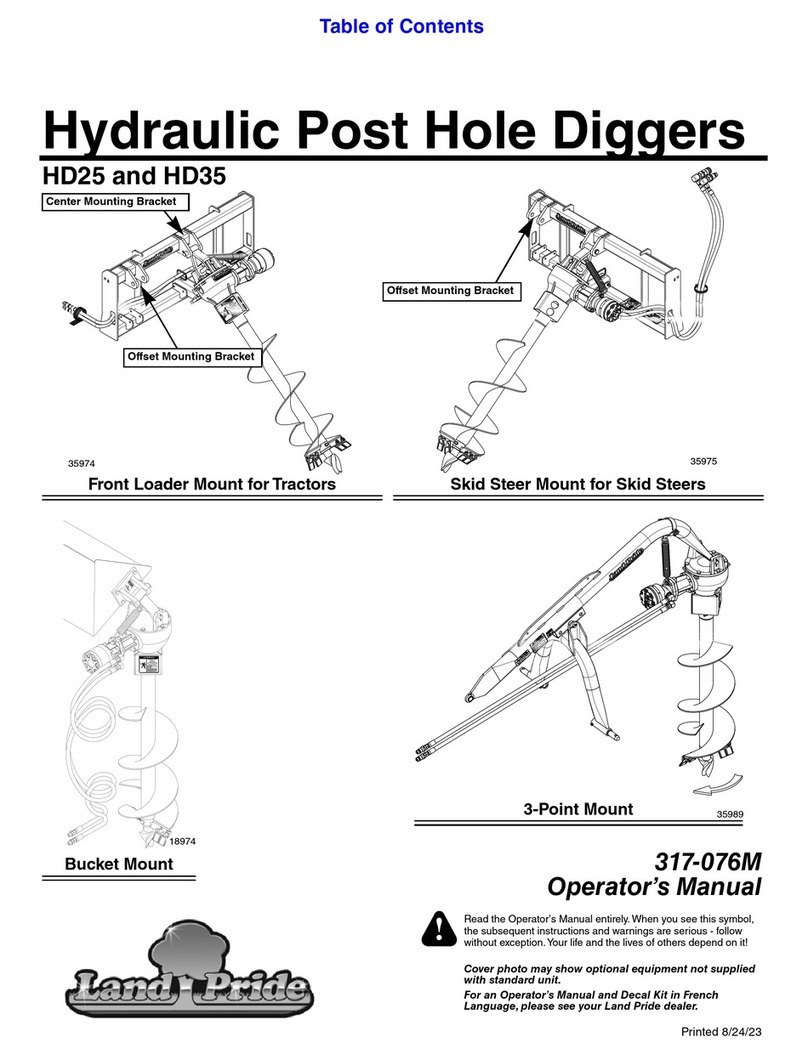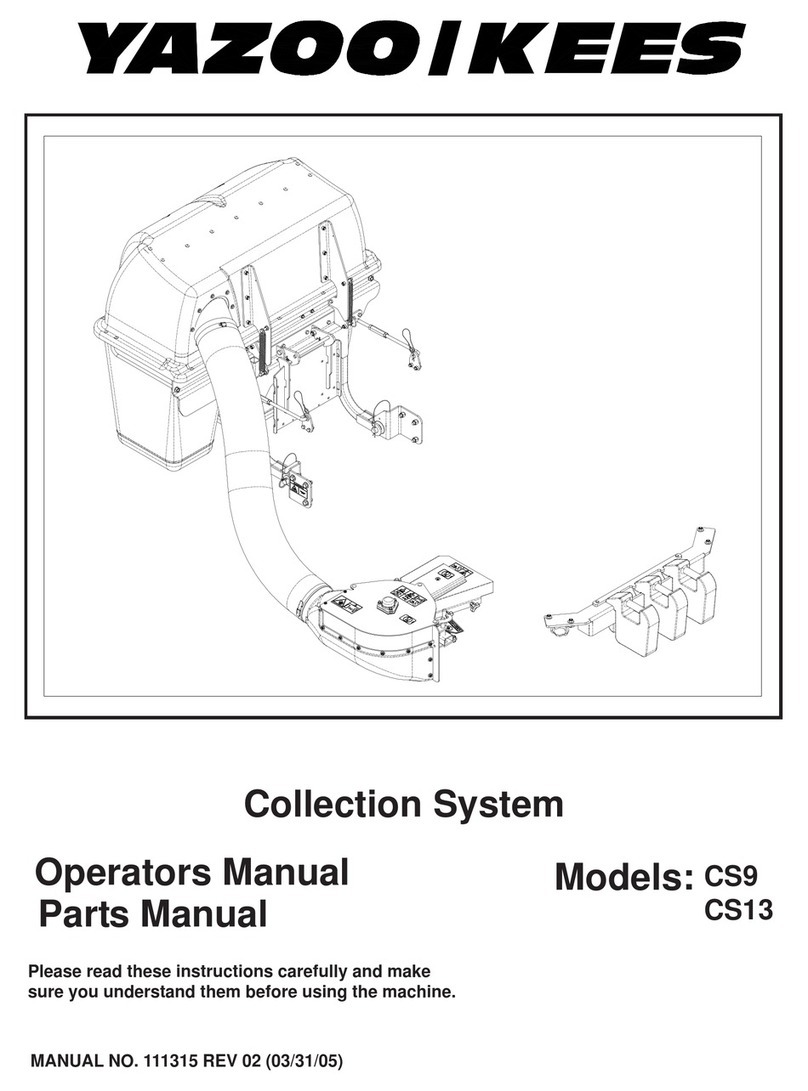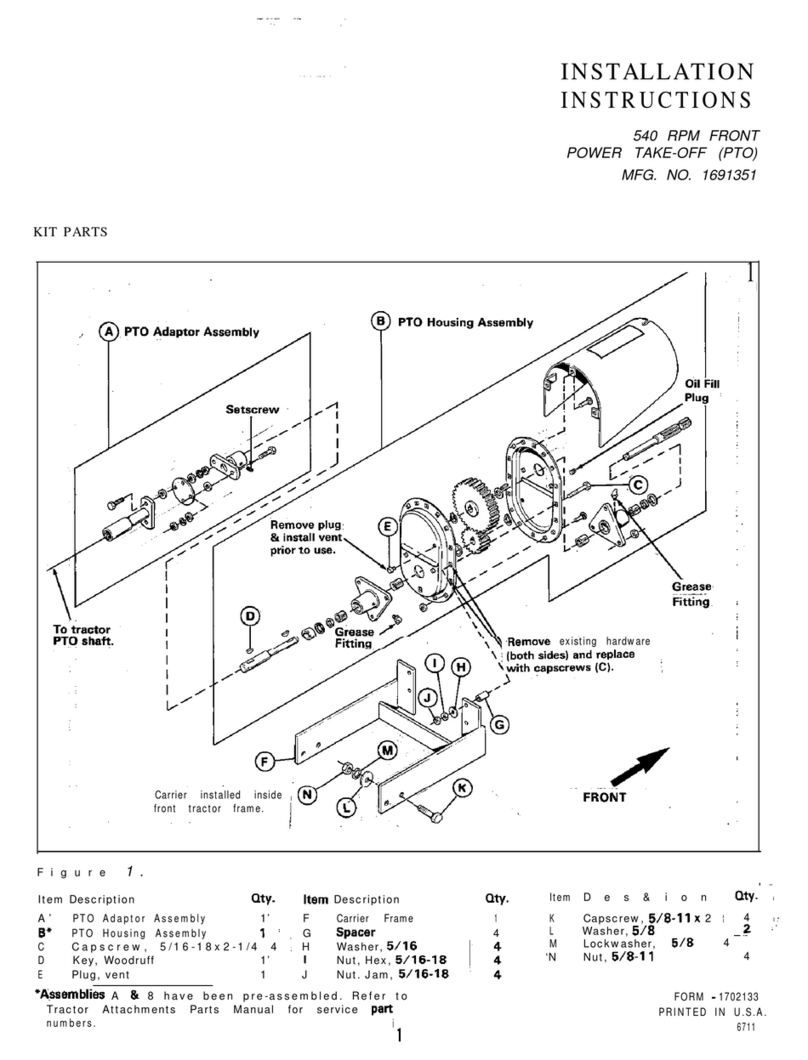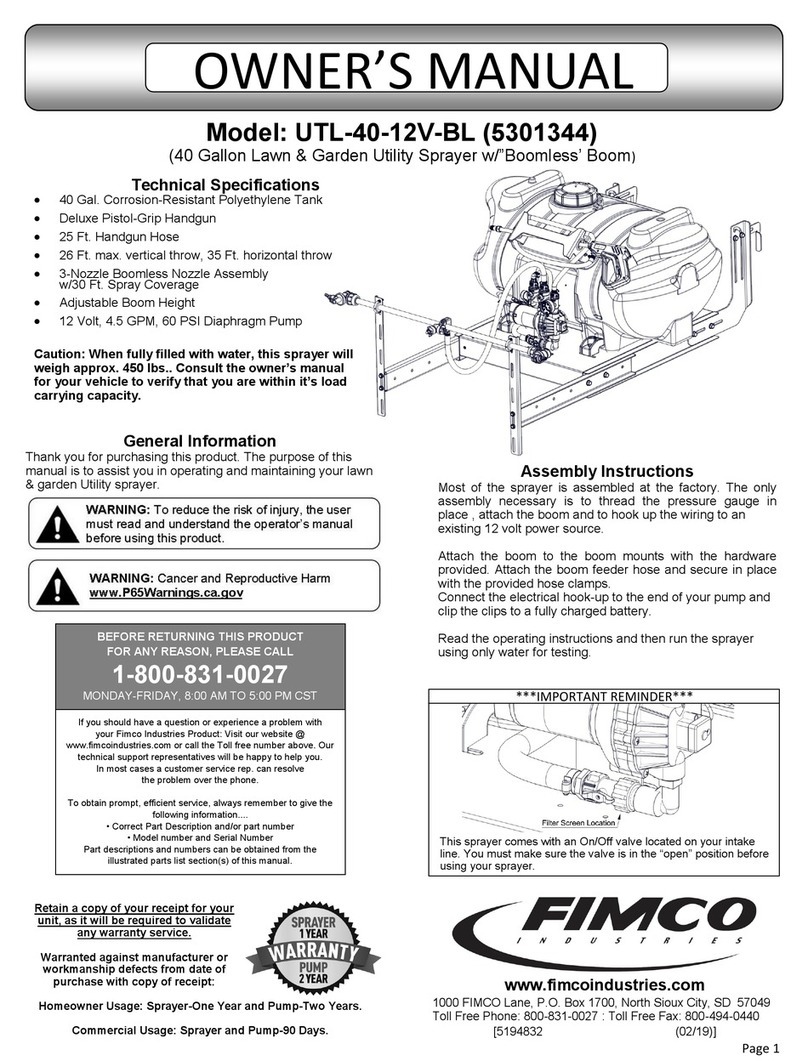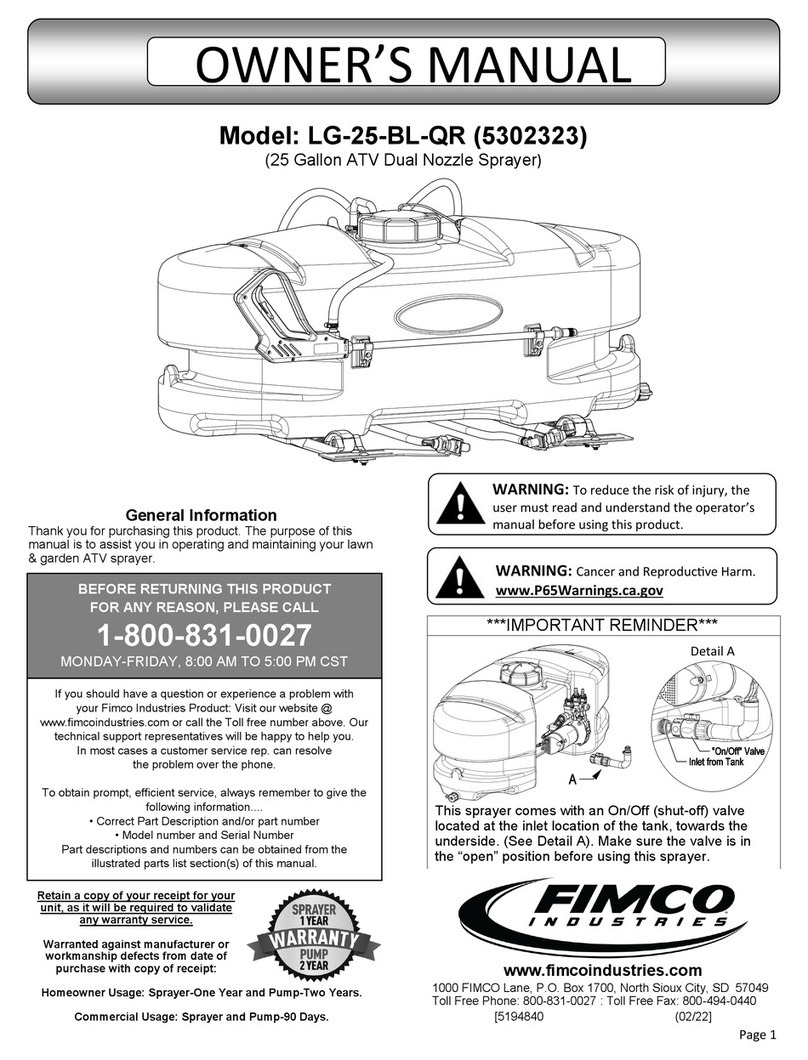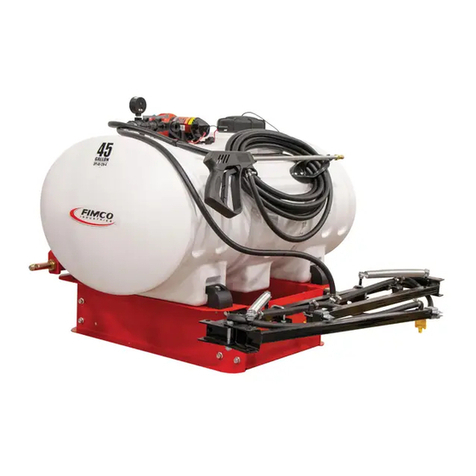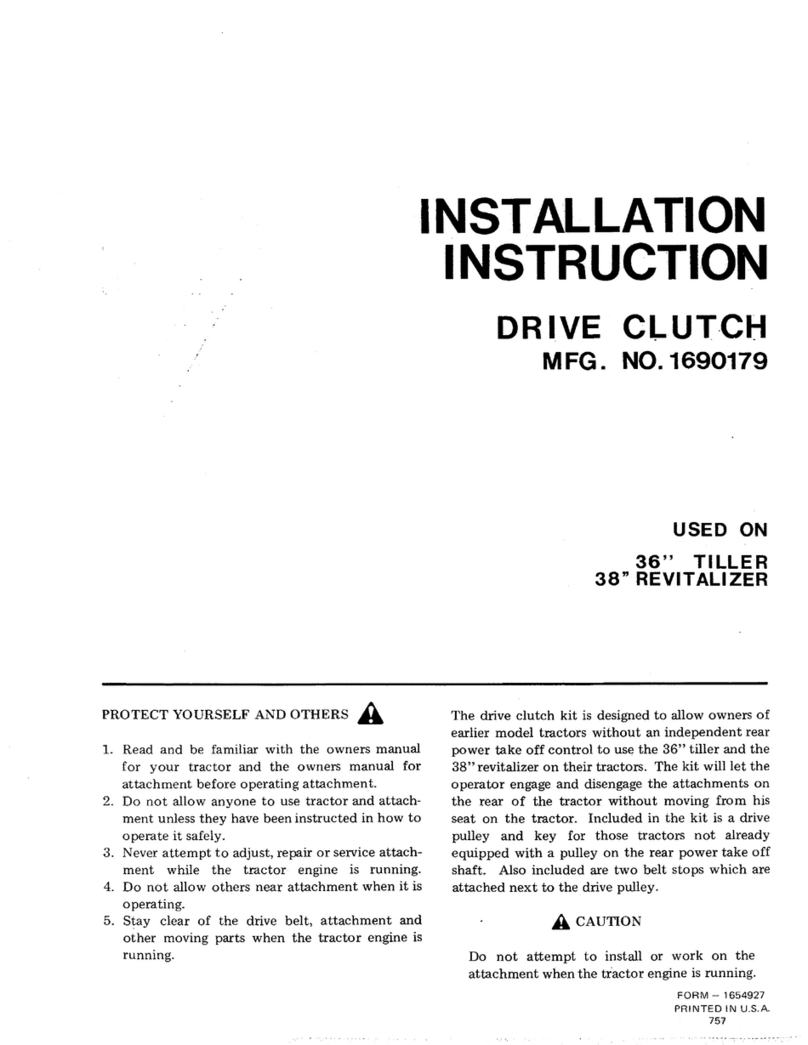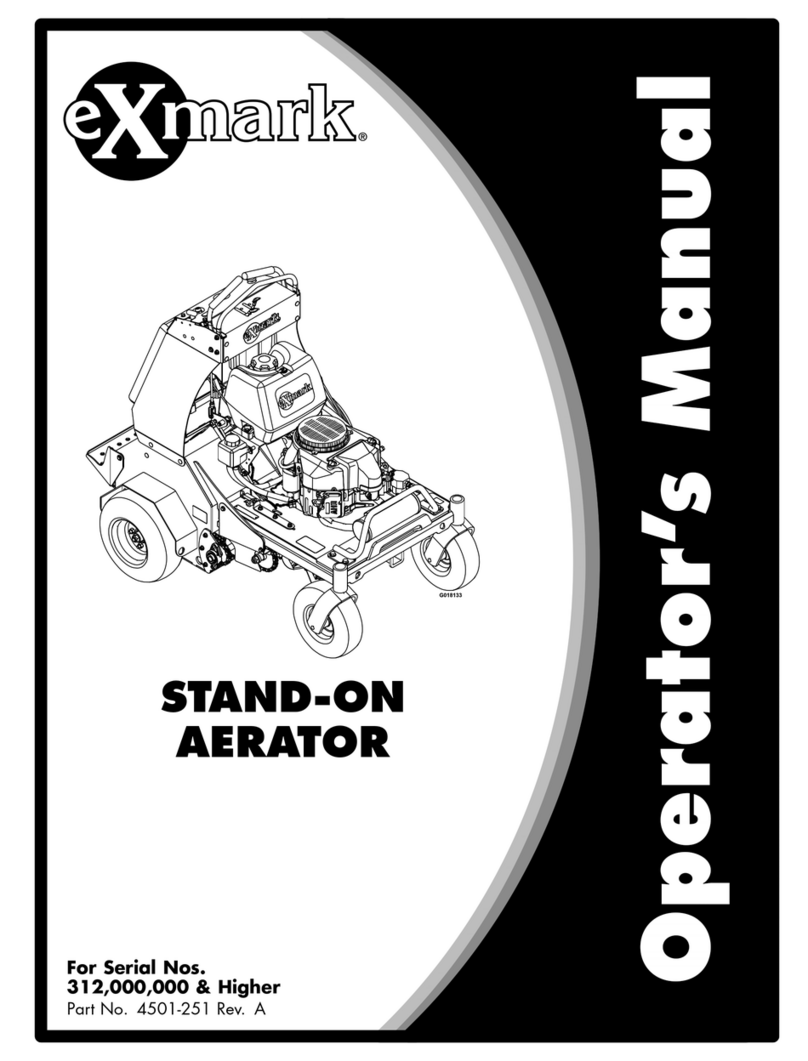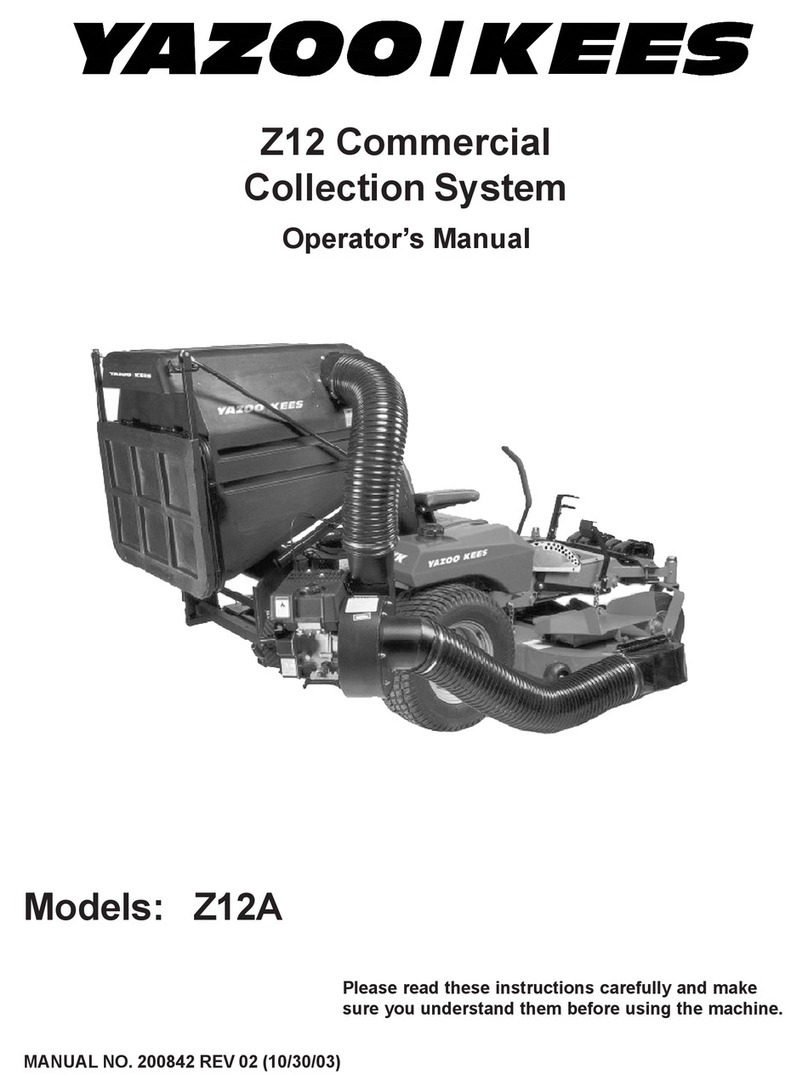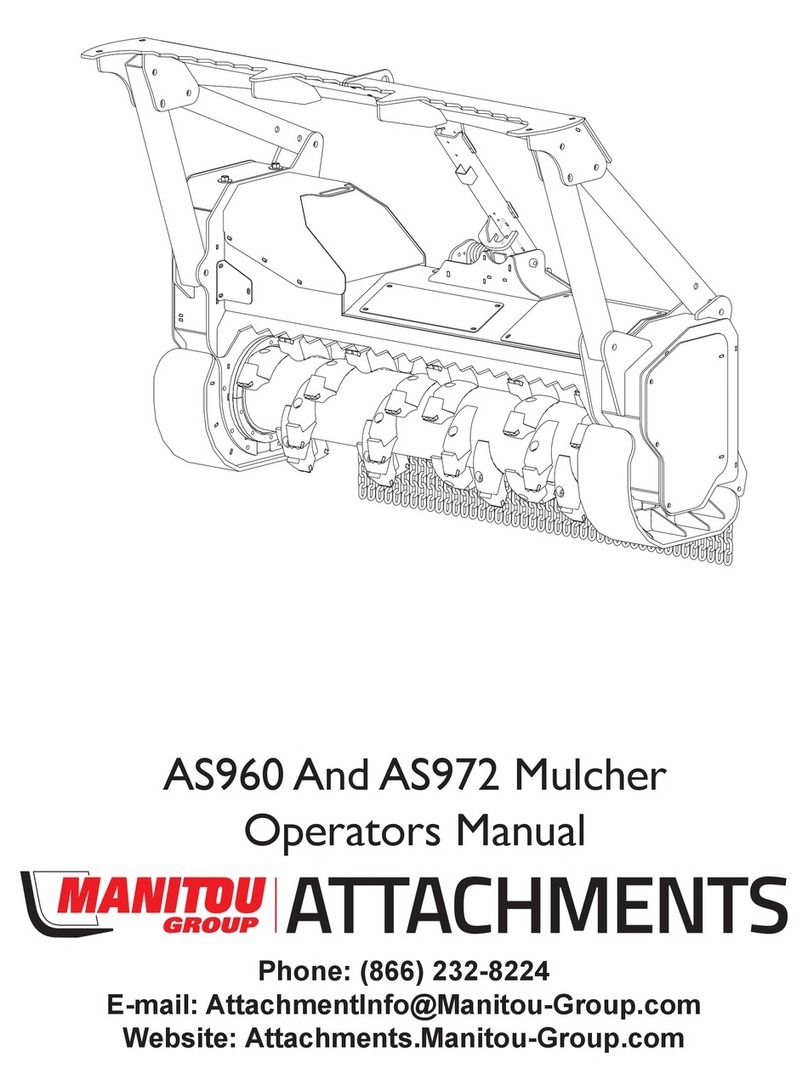
Page 7
Using the Boom Nozzles
Four things must be considered before spraying with the boom.
How much chemical must be mixed in the tank.
Rate of spray (gallons per acre to be sprayed).
What pressure (p.s.i.) will be used. (Sprayer will spray at
the 30 PSI range)
Speed traveled (mph) while spraying.
Refer to the chemical label to determine your chemical
mixture
Tip chart will show the speed used when spraying.
Start the pump and open the valve to the boom nozzles.
Check the spray pattern. Usually you can see the coverage better on a
solid concrete surface, such as a driveway.
Maintenance During/After Spraying
Periodically check the strainer and clean the screen on your intake line.
If sprayer becomes clogged during use, discontinue use immediately.
DO NOT attempt to service while chemicals are in the sprayer and power is
connected.
Proper care and maintenance will prolong the life of your sprayer.
After use, drain the tank and store or dispose of chemical properly. Fill the sprayer half way with clean water. Start the
pump and allow the water to pump through the entire plumbing system and nozzles. Drain and then refill half full, add
the recommended amount of a good quality tank cleaner, such as FIMCO Tank Neutralizer and Cleaner. (If no tank
cleaner is available, you may substitute dish soap for this step, about 1-2 oz. per gallon). But a neutralizer/cleaner
should be used to thoroughly clean the system. Turn pump on and circulate through system for 15 minutes and then
spray out through boom and handgun nozzles. Refill sprayer half way with clean water and repeat. Follow the chemical
manufacturer’s disposal instructions of all wash or rinsing water.
If boom or handgun nozzles need cleaning, remove them from the sprayer and soak in warm soapy water. Clean with a
soft bristled brush or toothpick if necessary. Never use a metal object. Even the slightest damage can change the flow
rate and spray distribution. Water rinse and dry the tips before storing.
WARNING: Some chemicals will damage the pump valves if allowed to soak untreated for a length of time! ALWAYS
flush the pump as instructed after each use. DO NOT allow chemicals to sit in the pump for extended times of idleness.
Follow the chemical manufacturer’s instructions on disposal of all waste water from the sprayer.
Tank Care & Maintenance
Warning: Do not use the tank as a container for fuel oils, kerosene, gasoline or any other petroleum distillate product.
All polyolefins are softened and permeated by such products. In an enclosed area the vaporization of these materials
from the outside surface of the tank could create a dangerous condition.
The tank should not be used as a pressure vessel nor used with chemicals or solutions having a weight of more than 12
pounds per gallon.
Store the tank in a dry dark place when not in use. Storage out of sunlight will prolong the life of the tank.
Do not drop, strike or kick the tank, especially at low temperatures. Tanks become brittle and are subject to cracking at
temperatures below 20° Fahrenheit.
Always flush the tank with water and a neutralizing agent at the end of each use, to prevent contamination of solutions.
Winter Storage
Prepare the sprayer for end-of-season storage by running RV antifreeze through the system. This will keep internal parts
lubricated, protect against corrosion and keep the unit from freezing. Note: RV antifreeze is non-toxic and biodegradable
and generally safer for the environment than automotive antifreeze.
Before storing your sprayer for winter or long term storage, thoroughly clean and drain it as much as possible. Then pour
enough pink RV antifreeze into the tank so that when the pump is turned on you can pump the antifreeze throughout the
entire plumbing system, including the bypass. Make sure to operate the boom and handgun until you see pink fluid
spraying from the nozzles. Leave any remaining antifreeze in the tank. Before your next usage, rinse the antifreeze from
the sprayer with clean water.
It is nearly impossible to drain all of the water from the sprayer and any trapped water can freeze in cold weather and
damage parts of the sprayer. Pumping the antifreeze through the system will displace the water and help prevent this
damage.
Removing from storage: drain the antifreeze. Fill the tank with fresh water and run through the system. Dispose of
antifreeze and flush water properly.
76 38 26 19.3 15.4
1.74 .87 .596 .44 .35
.174 .087 .059 .044 .035
Gallons Per Acre - Based on Water
Gallons Per 1000 Sq. Ft. - Based on Water
Gallons Per 100 Sq. Ft. - Based on Water
Tip Chart for TKT-VP3, TF-VP3 & 30DT3.0 Tips
Time Required in seconds
to travel a distance of
Speed in M.P.H.
(Miles Per Hour)
